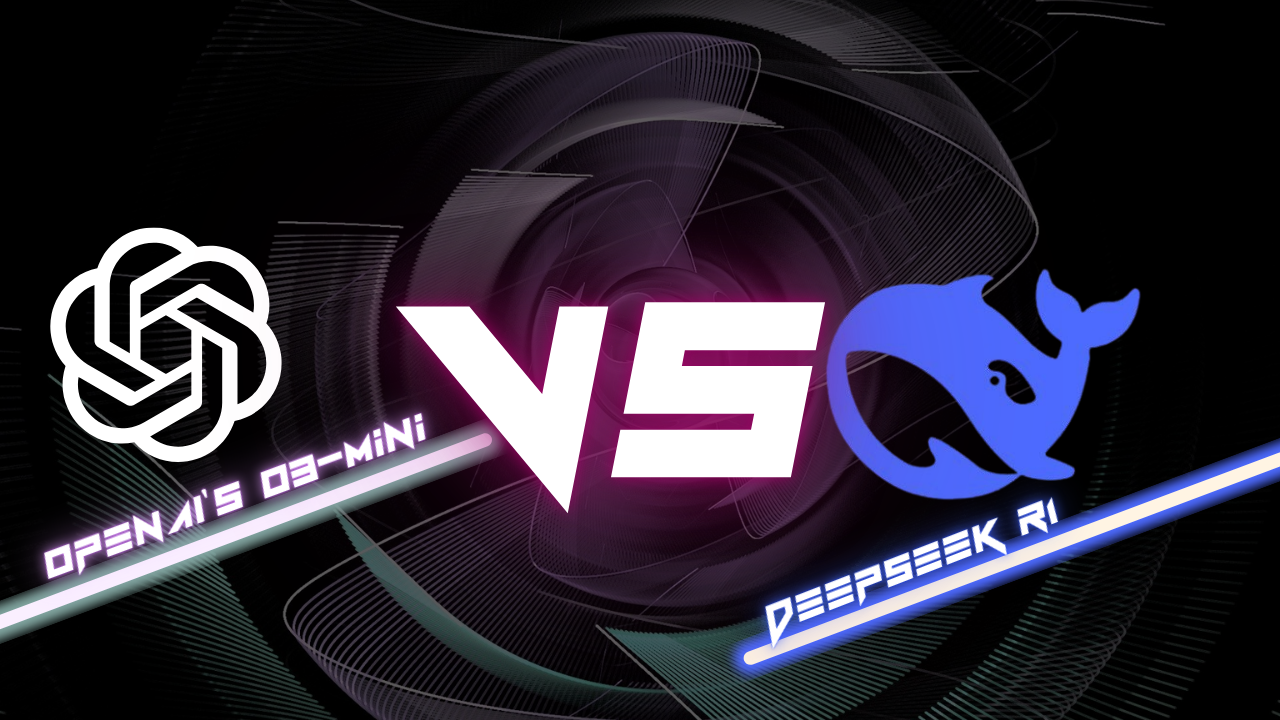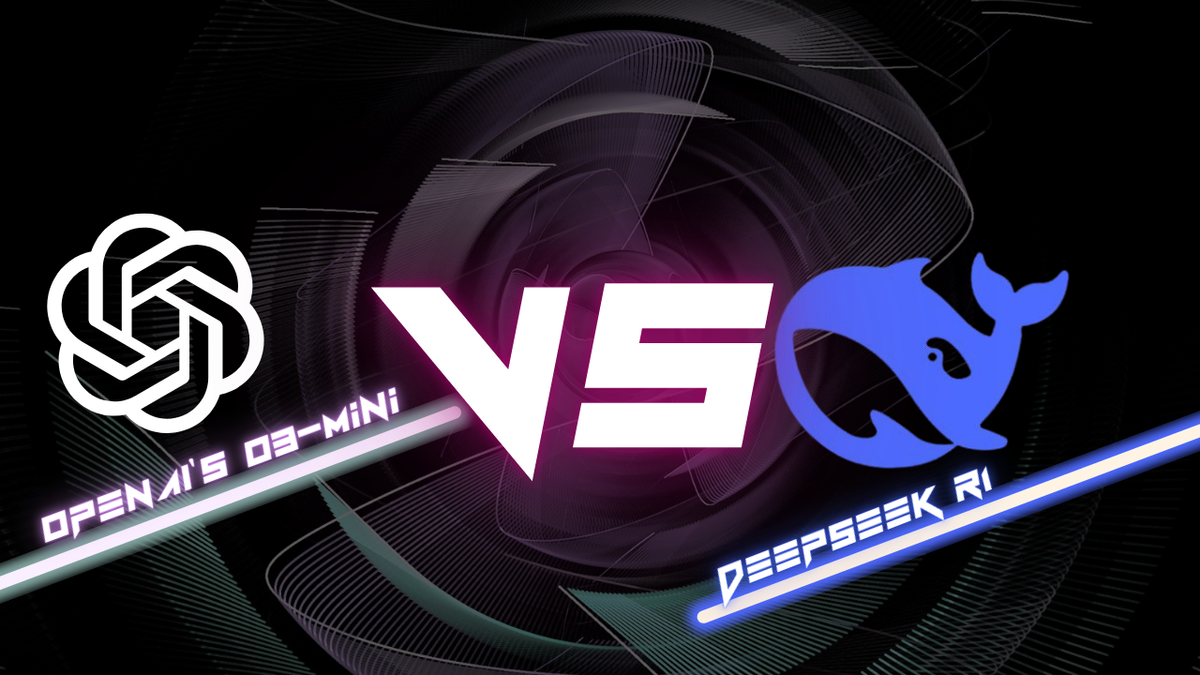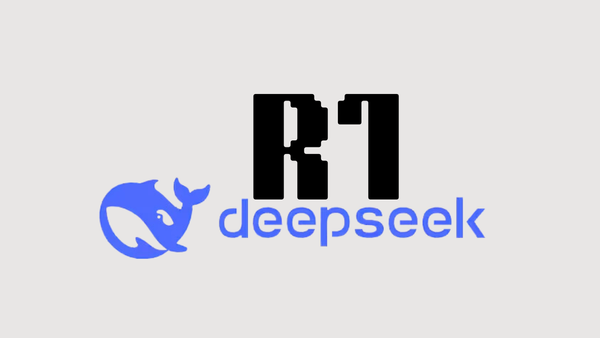
Performance in Reasoning and Problem Solving
The landscape of AI reasoning models has been significantly shaped by the introduction of OpenAI's o3-Mini and DeepSeek's R1. When it comes to the core functionality of these models—reasoning and problem-solving—distinct patterns emerge. OpenAI's o3-Mini has shown a remarkable capability in dissecting complex problems into manageable parts, which is indicative of its advanced reasoning algorithms. This model excels in scenarios where tasks require multi-step logical thinking, particularly in areas like coding where it outperforms DeepSeek R1 in benchmark tests like Codeforces, achieving an Elo rating of 2727 compared to DeepSeek R1's 2029.
In contrast, DeepSeek R1 has carved a niche for itself in mathematical reasoning. With scores like 93% on the MATH-500 benchmark, it demonstrates a robust understanding of numerical and logical challenges. However, it's in the application of these skills where nuances show; o3-Mini's approach to problem-solving is methodical, offering users options to adjust the model's reasoning intensity, which can be tailored between speed and accuracy. This flexibility is not as pronounced in DeepSeek R1, which, despite its prowess in math, can sometimes be less consistent in multi-turn conversational contexts.
The gap in reasoning performance is further highlighted in benchmarks like the Graduate-Level Google-Proof Q&A (GPQA) where o3-Mini scored an impressive 87.7%, significantly ahead of DeepSeek R1's 71.5%. This indicates not only a stronger grasp of English comprehension tasks but also a superior ability to handle complex, abstract reasoning tasks.
Coding Capabilities and Efficiency
Coding is another arena where these models are put to the test. OpenAI's o3-Mini has established itself as a formidable tool for developers, with enhancements over its predecessor models in coding accuracy and efficiency. It's particularly noted for its performance in environments requiring complex programming challenges, showing significant improvements in benchmarks like SWE-bench Verified. The model's ability to generate code that's not just syntactically correct but also functionally robust is a testament to its training on diverse coding datasets.
DeepSeek R1, while not as dominant in coding, still holds its own, especially when it comes to cost-efficiency and open-source accessibility. Its performance on platforms like Codeforces places it in a high percentile, showcasing that it can indeed handle coding tasks, though perhaps with less finesse than o3-Mini. One of R1's strengths is its architecture, which allows for a more resource-efficient operation, activating only a fraction of its parameters for each task. This approach makes it an attractive option for those looking to deploy AI solutions in environments with limited computational resources.
However, when we look at real-world applications, o3-Mini's structured output and function calling capabilities make it a preferred choice for developers who need reliable, predictable results in their coding tasks. This is coupled with its integration into OpenAI's ecosystem, providing seamless workflow for those already using other OpenAI services.
Cost, Accessibility, and Deployment
The conversation around AI models often pivots to cost and accessibility, areas where DeepSeek R1 shines. With token pricing that's substantially lower than o3-Mini, DeepSeek R1 democratizes access to high-performance AI reasoning for developers and businesses, especially startups and academic researchers. The model's open-source nature under the MIT license further amplifies its reach, allowing for modifications and integrations that are not possible with o3-Mini's proprietary approach.
On the other hand, o3-Mini's pricing, while higher, comes with the benefits of enterprise-level support, including SOC 2 compliance and granular usage controls, which are crucial for businesses with stringent security and data privacy requirements. The model's availability on ChatGPT for free users also broadens its accessibility, though with limitations on the number of messages per day for non-paying users.
Deployment considerations also differ; o3-Mini's integration with existing OpenAI platforms means businesses can leverage their infrastructure for quicker rollouts and integrations. Conversely, DeepSeek R1's open-source model invites a community-driven approach to deployment, where users can customize the model to fit specific needs or environments, potentially at a lower cost but with a steeper learning curve due to the need for in-house setup and maintenance.
User Feedback and Practical Applications
User feedback provides a practical lens through which we can view the real-world implications of these models. From posts on X and user analyses, a pattern emerges: o3-Mini is lauded for its reliability and polished performance, particularly in structured, routine tasks like data analysis or code generation. Its ability to handle multi-agent orchestration efficiently has been a point of praise, suggesting its suitability for complex software environments where multiple AI agents need to work in tandem.
DeepSeek R1 garners appreciation for its raw performance and cost-effectiveness, especially in academic settings or for projects where budget constraints are significant. Its reasoning transparency is also appreciated by researchers who value understanding the AI's thought process. However, there's noted inconsistency in multi-turn dialogues, which might limit its application in scenarios requiring sustained, nuanced interaction.
In practical applications, the choice between these models could come down to specific use cases. For example, in educational settings where cost and math proficiency are key, DeepSeek R1 might be preferable. In contrast, for a tech company needing to integrate AI into existing high-stakes software environments, o3-Mini's reliability and integration capabilities might tip the scale.
In summary, both OpenAI's o3-Mini and DeepSeek R1 push the boundaries of AI reasoning, each with unique strengths catering to different segments of the market. Whether it's the nuanced coding capabilities and structured reasoning of o3-Mini or the mathematical acumen and cost-effectiveness of DeepSeek R1, these models represent a significant leap forward in how we approach AI-driven problem-solving and decision-making. Their evolution will undoubtedly continue to shape the future of artificial intelligence in both research and industry applications.
Q&A Comparison between OpenAI's o3-Mini and DeepSeek R1:
Q1: What are the main differences in reasoning capabilities between OpenAI's o3-Mini and DeepSeek R1?
A1:
- o3-Mini excels in broad reasoning tasks, particularly in coding and complex problem-solving. It outperforms DeepSeek R1 in benchmarks like Codeforces and the Graduate-Level Google-Proof Q&A (GPQA), showing a stronger ability in logical thinking and English comprehension.
- DeepSeek R1 shines in mathematical reasoning, scoring higher than o3-Mini in benchmarks like MATH-500 and AIME. It uses a unique architecture for efficient computation, focusing on chain-of-thought (CoT) reasoning, which makes it particularly strong in tasks requiring numerical analysis.
Q2: How do o3-Mini and DeepSeek R1 compare in terms of cost and accessibility?
A2:
- o3-Mini is more expensive, with pricing at $1.10 for input and $4.40 for output per million tokens. However, it's integrated into OpenAI's ecosystem, offering enterprise-level features like SOC 2 compliance. It's also available to free ChatGPT users, though with limited daily messages.
- DeepSeek R1 is notably cheaper, with costs as low as $0.14 per million input tokens and $2.19 per million output tokens, making it highly cost-effective. It's also open-source under the MIT license, allowing for broader accessibility and customization, which is particularly appealing for academic and startup projects.
Q3: What are the strengths of each model in practical applications?
A3:
- o3-Mini is praised for its reliability in multi-turn dialogues and structured tasks like code generation, making it ideal for environments where consistency and integration with other OpenAI services are crucial. Its ability to adjust reasoning levels provides flexibility for different task complexities.
- DeepSeek R1 is favored for its performance in mathematical tasks and creative problem-solving, with a transparent chain-of-thought process that benefits research and educational applications. Its cost-effectiveness and open-source nature make it a go-to for projects where budget and customization are key considerations.
Q4: How do these models handle safety and ethical considerations?
A4:
- o3-Mini adheres to OpenAI's standards, which include safety measures to ensure responses align with ethical guidelines. It's noted for being safer in automated safety tests, with a lower rate of unsafe responses.
- DeepSeek R1, while powerful, has been subject to scrutiny due to its origin from DeepSeek AI, a Chinese company, potentially facing regulatory benchmarks to ensure responses align with "core socialist values." This might limit its responses on certain politically sensitive topics.
Q5: What has been the user feedback on these models?
A5:
User feedback from platforms like X reveals:
- o3-Mini is seen as more reliable, especially in coding and structured data tasks. Users note its speed and integration capabilities but mention its reasoning might sometimes feel less in-depth compared to DeepSeek R1.
- DeepSeek R1 receives acclaim for its mathematical and logical reasoning, with some users finding it more insightful in certain problem domains. However, there are complaints about occasional inconsistencies in multi-turn dialogues and availability issues.








